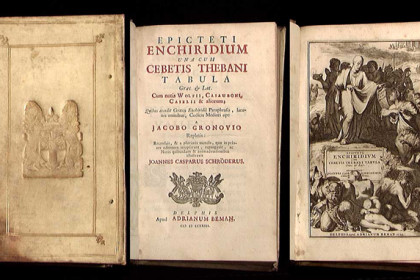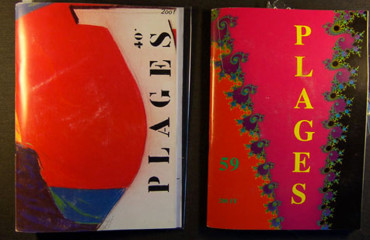
Drop Folio – Sheet that shows the page number in the foot when in the other pages it is placed at the top; it is typically used for chapter start pages.
Dummy – Volume composed solely of white sheets of paper, prepared by the printer or publisher to present to the client or to the author the facsimile of the work to print.
Egyptian, or Slab Serif type – Type created in 1820 whose characteristics are uniform pipes and stiff and flat serif. It is considered the model for the whole series of types used in the second half of the nineteenth century and called sans-serif.
Elzevir, type – Refined character whose name comes from the Dutch family of printers Elzevier, which made him realize for their small-format editions by Christoffel van Dijck in 1660. It is distinguished by very small, slender and graceful eye.
Enchiridion – From the greek enkeirìdion (then passed to the late Latin), or “held in his hand.” Indicates a manual of small size, typically refers to a complete discussion of doctrine or the collection of sources or historical evidence. In the broadest sense is defined enchiridion the in-8° print size, indicating a small book, handbook.
Epitext – The set of paratextual elements which do not form part of the book physically, as illustrative leaflets, advertising, media reviews.
Exergue or Exergo – In binding indicates a blank space (usually at the base of a medallion) where to put later a motto, a name, a date.
Explicit – Late entry of indicative mode of the Latin verb explicare, or “carry, unfold”. Used on rolls of papyrus or parchment indicated that the roll had been fully rolled out, then “esxplicit” stands for “ends” and is the first word of the formula “explicit feliciter liber…”, often followed by information about the title, the name of the author, the illuminator or scribe, placed at the end of manuscripts and early printed works before the introduction of the colophon. Today the term is used to refer to the last words of a work.
Face – Can have two meanings. 1. Each of the surfaces of a sheet, commonly called the front page or 2. Indicates typography in both parts of the character: the upper face, the one that presents the eye of the letter or its contour detection, and the lower face, as opposed to the eye, called foot.
Hardware or, formerly, ironware – Name of the metallic elements (studs, angle, edge protection simple or laced) that adorn late Middle Ages and Renaissance (Northern area) bindings.
Tailpiece – Decoration, ornament or ornamental character printed in the foot of the final page of text at the end of a chapter or the whole book.
 English
English  Italiano
Italiano 



